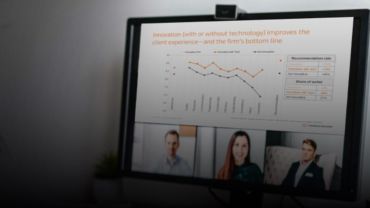As some law firms venture back to the office, it will force a rethinking of our relationship with the traditional office amid the new agile work environment
As we start to emerge from the heat of the pandemic and tentatively step toward more time in the office, it’s very clear that regardless of your position on what that should look and feel like, some things are going to be very different as we move forward.
Among all the changes and disruptions, arguably one of the most seismic in terms of our relationship with the traditional office environment is the fundamental step change in the art of the possible.
Data from Thomson Reuters suggests the industry has come through this period of disruption with as much hunger as ever, and a solid realization that a more flexible, agile relationship with the day-to-day is possible and can work for both law firms and corporate legal departments.
The research suggests that that throughout the pandemic only 15% of stand-out lawyers felt that remote working had negatively impacted working practices. This realization has impacted several workplace issues, such as:
-
-
- 67% of standout lawyers want more flexible hours;
- the desire that an element of remote working be part of everyday has grown substantially; and
- only 7% of corporate legal departments said they had experienced frustrations in working with law firms as a result of lawyers being outside of their normal office environment.
-
The acid test, of course, is how clients react — and early signs are very positive. Our latest survey of stand-out talent suggests that satisfaction with law firm leadership over the course of the last 12 months has increased. Indeed, there are clear signs that in these early days both sides of the relationship are committed to making this work.
However, it is still early days and the extent to which law firms can combine this desire for greater flexibility with long-term profitability remain to be seen. There is no doubt that a reduction of travel, entertainment, and some “old world” costs in recent months are contributing to some positive balance sheets. But as we start to move forward, there still needs to be some deeper cultural, structural, and behavioral shifts in how we work, to create the best conditions for sustainable success. These shifts will have implications not just for leadership but for all of us. Areas in which law firms have told us they are struggling include:
-
-
- collaborating across the firm to develop relationships with new clients and win new business; and
- creating an infrastructure and culture that supports the development of its people.
-
According to the lawyers we surveyed who are cited by their clients as being exceptional performers, there are three areas that law firm leaders need to focus on.
1. Leaders need to be better communicators
This means more structure and discipline to better create spaces and channels that keep information flowing and teams of people engaged, while not creating noise or fatigue. This is going to be a difficult balancing act but one that needs to be addressed.
2. Leaders need to embrace the concept of developing digital/human connections
As opportunities for developing connections with teams and clients in-person reduce, leaders need to make proactive efforts to find ways to make those connections in other ways. A key pillar of collaboration and idea generation is the human spark between colleagues — the difference between spotting ideas to innovate and exploring opportunities for client development or not doing so can often come down to how well team and leadership gel. And as workers and leaders alike sit on our own in our bedrooms and spare rooms while working remotely, leaders need to find ways to keep these sparks going or risk letting opportunities fall through the cracks in our digital lives.
3. Leaders need to be intentional with our actions
Leaders should plan meetings with clear purpose, empower junior members of the team to contribute, and work side-by-side virtually to share thought process and decision-making. The opportunity for these actions to happen organically has been drastically reduced, and it is on everyone’s shoulders to find new ways to keep these activities alive.
The extent to which these structural and cultural changes are embraced will tell us how successful the long-term sustainability of this new hybrid model of office work and remote work will be.







